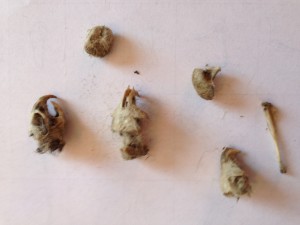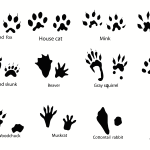 On Saturday, March 15th hike an average paced loop hike for 1.73 miles over easy terrain at the Joseph Ibberson Conservation Area. This is an easy hike for the whole family, ages 6 and older. Learn about the importance of vernal ponds and the migration of the Jefferson Salamander. Meet at the Duncannon Family Health Center at 51 Campus Business Way in Duncannon. Meeting time is 9:00 am. Call 834-9216 or email dtakach@duncannonatc.org to register. The conservation area is about 25 minutes from Duncannon .
On Saturday, March 15th hike an average paced loop hike for 1.73 miles over easy terrain at the Joseph Ibberson Conservation Area. This is an easy hike for the whole family, ages 6 and older. Learn about the importance of vernal ponds and the migration of the Jefferson Salamander. Meet at the Duncannon Family Health Center at 51 Campus Business Way in Duncannon. Meeting time is 9:00 am. Call 834-9216 or email dtakach@duncannonatc.org to register. The conservation area is about 25 minutes from Duncannon .
Camping Impact on the AT

 The Appalachian Trail Conservancy (ATC) has an interesting study of “Camping Impact Management on the AT” (in PDF format) written by Jeffrey L. Marion and published by the Appalachian Trail Conference in 2003. The study notes the challenges we face as more and more people hike and gather to camp along the AT. In this regard, the AT can be seen as a microcosm of society and, similarly, it must learn to deal with its increasing population while preserving its natural resources. We hope the crush of camping crowds can be overcome with wisdom, education and dedication.
The Appalachian Trail Conservancy (ATC) has an interesting study of “Camping Impact Management on the AT” (in PDF format) written by Jeffrey L. Marion and published by the Appalachian Trail Conference in 2003. The study notes the challenges we face as more and more people hike and gather to camp along the AT. In this regard, the AT can be seen as a microcosm of society and, similarly, it must learn to deal with its increasing population while preserving its natural resources. We hope the crush of camping crowds can be overcome with wisdom, education and dedication.
Here are a few suggestions you can follow to help preserve the AT while camping:
- Follow Leave No Trace principles.
- Camp only at designated locations.
- Camp on the exact location where someone else camped.
- Locate campsites on durable surfaces.
- Camp away from other campers and trails.
- Camp during off-peak periods.
- Never cut trees and keep campfires to a minimum.
- Travel in smaller groups.
- Don’t take your pet on camping trips.
- Follow advice of local guides and authorities.
Berry Mountain Hike Rescheduled
 The Berry Mountain Hike has been rescheduled for Sunday, March 2nd at 12:30 pm.
The Berry Mountain Hike has been rescheduled for Sunday, March 2nd at 12:30 pm.
Hike up and down Berry Mountain (located locally) for a total of 3.6 miles on easy terrain at an average pace. Enjoy the view of the Susquehanna River and surrounding mountains. Learn about hypothermia and how to treat it. Meet at the Duncannon Family Health Center at 51 Campus Business Way in Duncannon. Call 834-9216 or email dtakach@duncannonatc.org to regester. Bring water and a snack. Wear orange.
2,000 Milers List for 2013
This sortable and searchable list from the Appalachian Trail Conservancy (ATC) shows all 808 registered thru-hikers who finished walking the entire Appalachian Trail (AT) in 2013:
[table id=1 /]
Wagner Park
Take advantage of the snow this winter as it provides a unique experience in your backyard. On a recent hike through Wagner Park in Wheatfield Township, along the Little Juniata Creek, young beech and hemlock tree tops had reached to the forest floor from the weight of the recent snow. The park offers a rail trail along the creek and a loop trail both of which have mile markers along the way. See trail map at block building before heading into the woods.
Duncannon in the Snow
Here are a few pictures from my latest trip up to Cove Mountain in Duncannon, PA.
DOC January Hike – The Great Horned Owl
 For the January DOC hike we went out onto the Takach property in search of a Great Horned Owl’s nest. (In February the owls are in the nest and will protect their nesting sites aggressively.) The hike leader had found an area where there were promising signs of an owl’s nest. Owl droppings on an old snag used for a lookout were evident as were droppings on a large hemlock with a nest at the top. Feathers were also found at the bottom of the trees. Unfortunately, it snowed the day after finding the site so the group was unable to reach the site due to hazardous footing on a very steep hill. We went looking elsewhere without success. We did create a nesting site by using white paint for the droppings; on the ground, on a snag (dead tree – the lookout) and another tree close by with a nest in it. Scattered pellets and various feathers around the trees put on the final touch.
For the January DOC hike we went out onto the Takach property in search of a Great Horned Owl’s nest. (In February the owls are in the nest and will protect their nesting sites aggressively.) The hike leader had found an area where there were promising signs of an owl’s nest. Owl droppings on an old snag used for a lookout were evident as were droppings on a large hemlock with a nest at the top. Feathers were also found at the bottom of the trees. Unfortunately, it snowed the day after finding the site so the group was unable to reach the site due to hazardous footing on a very steep hill. We went looking elsewhere without success. We did create a nesting site by using white paint for the droppings; on the ground, on a snag (dead tree – the lookout) and another tree close by with a nest in it. Scattered pellets and various feathers around the trees put on the final touch.
All was not lost, we learned about the great owl and had the opportunity to dissect owl pellets at the Takach’s. Moles and voles seemed to be the prevalent prey ingested by the owls. Surprisingly, we found a bird skull and a snake skull, and yes, in answer to everyone’s question and observation of the skull, snakes do have tiny little teeth to help ingest prey. Continue reading
Duncannon Outdoor Club February Hike
 On Feb. 15th hike 3.60 miles up and down Berry Mountain (located locally) on easy terrain at an average pace. Enjoy the view of the Susquehanna River and surrounding landscape. Learn about hypothermia and how to treat it. Meet at the Dunncannon Family Health Center at 51 Business Campus Way in Duncannon. Meeting time is 9:00 am. Call 834-9216 or email dtakach@duncannonatc.com to register. Bring water and a snack. Wear orange due to the hunting season. Hope to see you there!
On Feb. 15th hike 3.60 miles up and down Berry Mountain (located locally) on easy terrain at an average pace. Enjoy the view of the Susquehanna River and surrounding landscape. Learn about hypothermia and how to treat it. Meet at the Dunncannon Family Health Center at 51 Business Campus Way in Duncannon. Meeting time is 9:00 am. Call 834-9216 or email dtakach@duncannonatc.com to register. Bring water and a snack. Wear orange due to the hunting season. Hope to see you there!
DATC Newsletter – January 2014
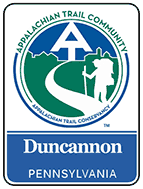 NEXT MEETING: The Duncannon Appalachian Trail Community Advisory Committee will hold its next meeting Wednesday, February 12th at 6:30 PM in the Duncannon Christ Lutheran Church located at 115 Church Street. An RSVP is not required but it’s greatly appreciated. Our agenda will focus on next year’s 2014 Duncannon A.T. Community Festival, we’ll discuss the progress we’ve made in the past month and further increasing meeting attendance. If you’re interested in attending DATC meetings, please vote for your preferred day of the month for future DATC meetings.
NEXT MEETING: The Duncannon Appalachian Trail Community Advisory Committee will hold its next meeting Wednesday, February 12th at 6:30 PM in the Duncannon Christ Lutheran Church located at 115 Church Street. An RSVP is not required but it’s greatly appreciated. Our agenda will focus on next year’s 2014 Duncannon A.T. Community Festival, we’ll discuss the progress we’ve made in the past month and further increasing meeting attendance. If you’re interested in attending DATC meetings, please vote for your preferred day of the month for future DATC meetings.
OUR PREVIOUS MEETING: Here is a list of some of the topics that we covered at our last January 8th DATC meeting: Continue reading
Duncannon Outdoor Club December Hike
- The Trackers!
- The Tracks
- The Trackers Making Tracks.
 The DOC had great weather for a great day. It was warm but not so warm that the snow melted. Consequently, we got to learn about and identify a number of different animal tracks.
The DOC had great weather for a great day. It was warm but not so warm that the snow melted. Consequently, we got to learn about and identify a number of different animal tracks.
Prior to our start a hunter warned us to keep an eye out for a mother bear with two cubs. Apparently, momma bear was not happy with him and approached him earlier in the week. We found no bear tracks, but then we did make a lot of noise as we sang Jingle Bells while climbing the mountain.
We did see a lot of tracks: turkey, fox, deer, squirrel, raccoon, and voles ( We scooped the snow off the top of the vole tunnels to see their tracks.). We also saw a number of tracking clues such as scats , digs, debarking, trails, and hair. The debarking was more likely caused by a porcupine since it was high up in the tree, higher than if a rabbit had done it. The deer hair and snow markings were indicative of a hunter who was dragging out his or her kill.
Three out of the four basic animal tracking gaits were observed: Straight Walker, Hopper, and Waddler. We did not see any Bounders. Straight Walker is the most common gait for Continue reading

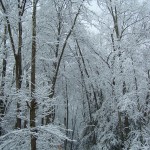
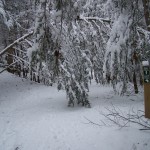
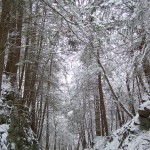
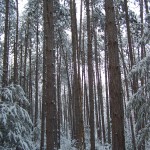
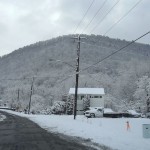
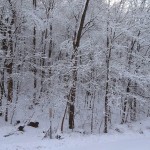
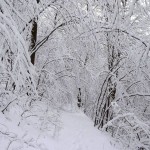
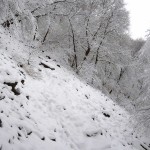
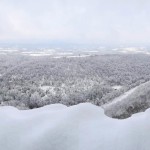

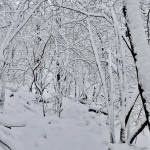
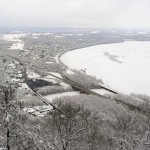
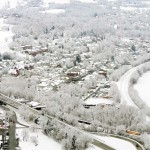



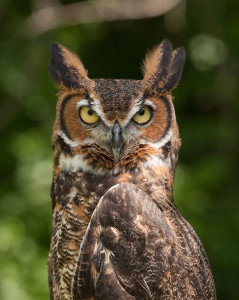
![highres_324689032[1]](https://duncannonatc.org/wp-content/uploads/2014/02/highres_3246890321-300x228.jpg)
